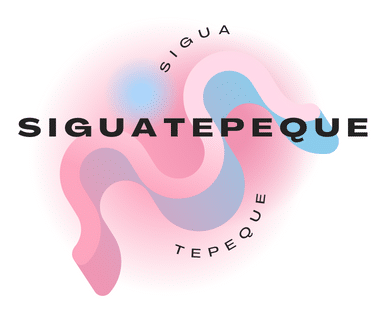How Can Phytoremediation Clean Up Contaminated Land in UK Urban Areas?

It’s no secret that soil and water contamination is a significant environmental issue across the globe. As you walk through urban areas in the UK, you might not see it, but beneath your feet, there could be a world of pollution. Hidden from sight, this contamination can affect local ecosystems and water sources, posing a risk to both wildlife and humans. But have you ever imagined that plants, yes, simple green plants, could be a potent tool to combat this issue? This idea, known as phytoremediation, is gaining traction as a sustainable and cost-effective method to mop up contamination from soils and water.
The Basics of Phytoremediation
Phytoremediation is a process that uses plants to clean up contaminated environments. It’s a natural method that scientists and environmentalists have been studying and implementing with promising results. Its benefits include the fact that it’s cost-effective, non-invasive, and aesthetically pleasing. But how exactly does this process work?
In the same genre : How to Plan a Zero-Footprint Wedding in the UK?
The plants used in phytoremediation have specific traits that allow them to absorb, transform, or accumulate contaminants within their tissues, primarily in their roots but also in their stems and leaves. These plants are commonly referred to as hyperaccumulators, and they have a unique ability to thrive in environments with high concentrations of metals or other toxins.
The primary mechanism of phytoremediation is named phytoextraction, which involves the uptake of contaminants from the soil into the plant body. To put it simply, the plant drinks up the polluted water from the soil, and the toxins are stored in its roots, stems, and leaves. Over time, this results in a significant reduction in the level of contamination in the soil.
Also to see : Transform your furniture: top reupholstery services in london
This process can be used to target a wide range of contaminants, but one of the most commonly targeted groups is metals. Many urban areas in the UK have high concentrations of metals in their soils due to historical industrial activities.
Google Scholar, Crossref, and the Study of Phytoremediation
The science behind phytoremediation isn’t new, but it has been a hot topic of research in recent years. You can easily access numerous studies on the subject by searching on platforms like Google Scholar and Crossref. These platforms bring together scholarly articles from around the world, allowing you to access a wealth of knowledge on the process of phytoremediation, the best plants to use, and the types of contamination it can address.
Most of these studies focus on how different plant species accumulate various metals and the effectiveness of the phytoremediation process. For example, sunflowers and Indian mustard have been found to be particularly effective at removing lead from soils, while willow trees excel at phytoextraction of copper and zinc. Each plant species has its unique abilities and limitations, and understanding these is crucial to implementing successful phytoremediation projects.
Phytoremediation in Action: Case Studies from the UK
The UK, with its rich industrial history, has many urban areas suffering from soil and water contamination. Phytoremediation has been tried and tested in various places across the UK, with some noteworthy successes.
In the area surrounding the River Nent in Cumbria, for example, phytoremediation was used to reduce the high levels of lead, cadmium, and zinc in the soil resulting from historical mining activities. Willow trees were planted in the area, and over several years, they significantly reduced the concentration of these metals in the soil.
Another example comes from the South Wales Valleys, where former coal mining sites were successfully cleaned up using a mix of grass species that were able to accumulate and tolerate high levels of heavy metals. This project not only resulted in cleaner soils but also helped to improve the aesthetics of these post-industrial landscapes.
The Challenges and Future of Phytoremediation
Despite its potential, phytoremediation is not without its challenges. One of the main issues is that it’s a slow process. It can take years, even decades, for plants to sufficiently clean up an area. This is a long time to wait, especially when the contamination poses immediate risks to human health or the environment.
Another challenge is the disposal of the plants once they have accumulated toxins. If not handled correctly, these plants can become a source of secondary contamination. Therefore, it’s essential to have proper disposal methods in place, such as incineration or safe composting processes.
Despite these obstacles, the future of phytoremediation looks promising. With ongoing research and advancements, scientists are discovering new plant species and methods to make the process more efficient. Furthermore, with the rising interest in green solutions and sustainable practices, phytoremediation is likely to gain more attention and support in the coming years.
So next time you walk through an urban area, remember that beneath your feet, there could be a green revolution going on. Phytoremediation, the process of using plants to clean up pollution, might just be the sustainable solution we need to reclaim our contaminated soils and water.
The Role of Google Scholar, Crossref, and Plant Species in Phytoremediation Research
The research regarding phytoremediation has seen a significant upsurge in recent years, with Google Scholar and Crossref becoming vital platforms for this growing field of study. These platforms provide a wide array of scholarly articles detailing the process of phytoremediation, the types of contamination it can address, and the specific plant species that are most effective at doing so.
Several studies highlight the removal efficiency of different plant species when dealing with various heavy metals. For instance, sunflowers and Indian mustard are hailed for their ability to eliminate lead from soils. Willow trees, in contrast, are particularly good at the phytoextraction of copper and zinc. The detailed knowledge regarding the capabilities and limitations of each plant species, readily available on platforms like Google Scholar and Crossref, is paramount to successful phytoremediation projects.
Moreover, researchers are continually exploring new plant species and their potential in dealing with different types of contamination. For instance, recent studies, accessible via DOI Crossref and PubMed Crossref, have been investigating the efficiency of various ferns and aquatic plants in removing toxic metals from contaminated soils and improving water quality.
The research in this field is continuously evolving, with scientists working on improving the phytoremediation process by combining it with other methods, such as the use of bacteria or fungi to enhance the removal efficiency of plants.
Conclusion: The Green Revolution Underfoot
Despite the challenges, phytoremediation holds immense potential as a sustainable solution for cleaning up contaminated land in urban areas across the UK. It’s a natural, cost-effective, and aesthetically pleasing method of detoxifying soils laden with heavy metals and other pollutants. However, it’s important to remember that it’s not a quick fix. It requires time, careful planning, and the right choice of plant species to be effective.
Researchers are dedicating their efforts to overcome the challenges associated with phytoremediation, such as the slow pace of the process and the disposal of toxin-laden plants. The continuous research, facilitated by platforms like Google Scholar, Crossref, PubMed Crossref, and Scilit Preprints, is crucial in discovering new plant species and methods to enhance the efficiency of phytoremediation.
Moreover, with the rising public interest in green solutions and sustainable practices, it’s likely that phytoremediation will receive more attention and support in the future. As the green revolution continues beneath our feet, the day might not be far when our walks through urban areas will be over lands reclaimed and detoxified by the very roots and shoots of nature. The process of phytoremediation, using plants to clear up pollution, could indeed be the green version of a cleanup act we need in our urban spaces.
